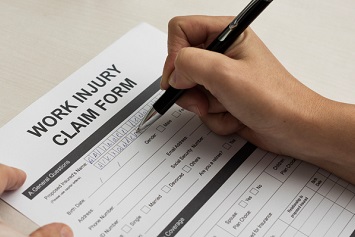Many factors can affect the number and severity of your workers’ compensation claims, but none more than the quality of your workplace safety and health program. Some studies have shown that every dollar invested in a safety and health management program can net an employer $3 to $10 in cost savings.
Factors that contribute to workers’ compensation claims include:
- Workers’ nonwork health behaviors and conditions such as lack of exercise, obesity, poor stress management, smoking, and sleep disorders.
- Worker age—younger workers may be less experienced and knowledgeable and more apt to take risks that result in accidents and injuries; older workers become injured less frequently, but the claim costs associated with their injuries and illnesses can be higher, and their time away from work can be longer.
- Worker behavior—compliance, conscientiousness, resilience, and risk-taking.
- Working conditions and workplace stress.
Preventing Accidents, Injuries, Claims
Steps you can take to prevent accidents and injuries and reduce the risk of a workers’ compensation claim begin before an employee is even hired. Effective safety and health management measures include:
- Having your Human Resources (HR) personnel screen for behavioral and personality traits like resilience, compliance or disobedience, and risk-taking;
- Having your HR staff emphasize your company’s safety culture and the importance of compliance with safety procedures to prospective employees;
- Educating and training new employees in their job duties, the safety and health hazards of the job, and the importance of following safety procedures;
- Enforcing your company’s safety procedures, recognizing or rewarding those employees who follow safety procedures, and instituting real consequences for those who do not follow procedures;
- Supplying all your employees with necessary personal protective equipment (PPE);
- Investigating and reviewing near misses, injuries, and work practices to identify safety weaknesses and updating safety procedures, if necessary; and
- Training your employees in new or updated safety procedures and monitoring their compliance.
Take every opportunity at staff meetings and during employee performance reviews to talk about the importance of safety in your facilities and compliance with your safety policies and procedures. You want your employees to be fully engaged in protecting their own and others’ safety and health. A strong safety culture can help prevent the accidents that lead to workers’ compensation claims.
New Hires, New Claims?
You need to take special care with new employees. One workers’ compensation insurance underwriter analyzed 5 years of claims and found that 28 percent of workplace injuries resulting in claims happened in the first year of employment.
An inexperienced worker’s first month on the job is the riskiest. Another insurer found a worker’s injury rate is four to six times higher in the first month on a new job.
New hires develop their impression of the job and the company’s safety culture during the orientation and onboarding processes. They must be properly educated in the essential and nonessential functions of the job, as well as its parameters, like the acceptable speed of the machinery they use.
You may want to pair a new hire with an experienced employee who is well versed in the job’s requirements and the company’s safety culture and procedures.
Your company’s onboarding process should include training in both:
- The job’s specific procedures and the skills and knowledge required, and
- Awareness of task-specific and overall workplace hazards and hazard controls and your safety procedures.
The Risks of Risk Takers
You can be exposed to accidents and claims when your employees take unnecessary risks to save time or cut their workload. Some workers may even take risks in a misguided attempt to gain efficiency or find cost savings for you.
Risky behaviors that can lead to accidents and claims include:
- Circumventing safety devices or rendering them inoperable;
- Performing maintenance or repairs on equipment or machinery that is still operating instead of following proper lockout/tagout procedures to de-energize equipment or machines;
- Failing to use provided PPE;
- Using equipment or tools improperly or operating machinery at unsafe speeds;
- Taking an unsafe position or posture;
- Using tools known to be unsafe or using them in an unsafe manner; and
- Mixing or combining substances or materials that can cause injury or illness.
Red Flags: Disciplinary Actions
Research has found a correlation between disciplinary actions and workers’ compensation claims. Employees who must be disciplined for not following workplace rules or not reporting on time for duty are more likely to be involved in serious safety incidents.
Background checks and behavioral screening during the hiring process can save you from risk-taking employees who are likely to become injured and saddle you with workers’ compensation claims.
However, it’s equally important to assess your company culture to ensure that your organization isn’t incentivizing risk-taking behavior, either knowingly or unintentionally, by setting unrealistic production schedules, rewarding unsafe shortcuts by praising the production numbers they produce, or discouraging hazard and injury reporting. What may at first appear to be employee misconduct may actually be a response to organizational factors.
Strains, Sprains from Lifting
A study of workers’ compensation claims found the five most common injuries were strains and sprains, cuts or punctures, contusions, inflammation, and fractures. The most common causes were:
- Material handling;
- Slips, trips, and falls;
- Struck by or colliding with an object;
- Accidents with tools; and
- Overuse or strain.
One insurer found material handling incidents accounted for 32 percent of all their workers’ compensation claims and 37 percent of claims in the manufacturing and retail industries.
Common lifting injuries that lead to workers’ compensation claims include:
- Back strains or sprains like the stretching or tearing of back ligaments or muscle and tendon sprains;
- Herniated disks—injuries to the soft tissue between vertebrae that can lead to pressure on adjacent spinal nerves, which is an often debilitating condition;
- Patellar tendonitis—an injury to the tendon that connects the kneecap to the shinbone; and
- Rotator cuff tears in the shoulder and shoulder impingement syndrome.
Worker Age Affects Claims
A worker’s age—whether young or old—can affect workers’ compensation claims. Young and inexperienced or risk-taking workers are more likely to become injured. The frequency of workplace injuries declines as a worker ages. However, when older workers are injured or become ill, the injury or illness is more likely to be severe or even fatal.
Younger employees may be inexperienced and less knowledgeable in both job-specific work tasks and appropriate safety and health measures. Younger workers may be more inclined to take risks on the job than older workers. Careful preemployment screening, well-planned onboarding, and extensive safety training can help mitigate these risks.
Older workers often have greater awareness of safety measures but may become complacent with experience. Refresher training and messaging are critical to helping all employees maintain a high level of safety awareness.
Age-related disabilities and existing or developing health conditions in older workers—what experts call “comorbidities”—can lead to accident claims, increased medical costs, and extended recovery times for older workers. Workplace accommodations and a robust wellness program can help older workers better manage their health conditions.
One study of workers’ compensation claims found that:
- Claim costs can be higher for older workers than younger ones in occupations involving hard, physical labor.
- On the other hand, medical costs can sometimes be lower for older workers who already are using prescription medications for pain relief.
- Time away from work or length of disability can increase with age, emphasizing the need for an effective return-to-work program.

To learn more about how you can build a stronger safety culture, prevent accidents, and lower your workers’ compensation costs, join us at Safety Culture 2019 this September in Colorado!
Stress a Factor
Workplace and nonwork stress can lead to injuries and illnesses that result in workers’ compensation claims. Stress also can affect the duration of a sick or injured employee’s time away from work, impacting the costs of claims.
Nonwork stressors like financial, health, or relationship issues often are outside your control. However, you can take simple steps to relieve workplace stress like giving employees greater control over their schedules, reducing worker burnout, and boosting job satisfaction.
Mental health issues like addiction, anxiety, and depression can also factor into the likelihood of injuries and illnesses and affect the costs of claims. Other health factors that can lead to claims include obesity, sleep disorders, and smoking. Tying wellness to safety can control the health factors that lead to claims.
Not Just Wellness—Total Worker Health
The Total Worker Health (TWH) concept developed by the National Institute for Occupational Safety and Health (NIOSH) integrates health promotion into workplace safety and health protection.
TWH takes a holistic approach to a wide range of factors affecting worker well-being. Several health conditions can lead to or affect the severity of injuries and illnesses, and these include:
- Cardiovascular disease;
- Depression;
- Obesity; and
- Sleep disorders, which are a leading cause of transportation safety incidents.
The TWH approach covers issues ranging from access to affordable, quality health care to the availability of healthy air, food, and water; changing workplace demographics; stress management and the effects of long hours or shift work; and traditional hazard and exposure controls.
Taking steps like screening and vetting job applicants, educating and training new employees, and offering workers tools for managing on-the-job hazards and nonwork factors can help limit your workers’ compensation claims.
 Want to learn more about TWH? Join L. Casey Chosewood, MD, MPH, the Director of the Office for Total Worker Health® at the National Institute for Occupational Safety and Health, at Safety Culture 2019, taking place September 18–20 in Denver, Colorado! Want to learn more about TWH? Join L. Casey Chosewood, MD, MPH, the Director of the Office for Total Worker Health® at the National Institute for Occupational Safety and Health, at Safety Culture 2019, taking place September 18–20 in Denver, Colorado!
During the conference, Dr. Chosewood will be presenting his session, Stress, Fatigue, and Mental Health: Real-World Culture Building to Improve Worker Safety and Health, where you will learn how to proactively identify safety risks, reduce churn, and eliminate injuries. |

